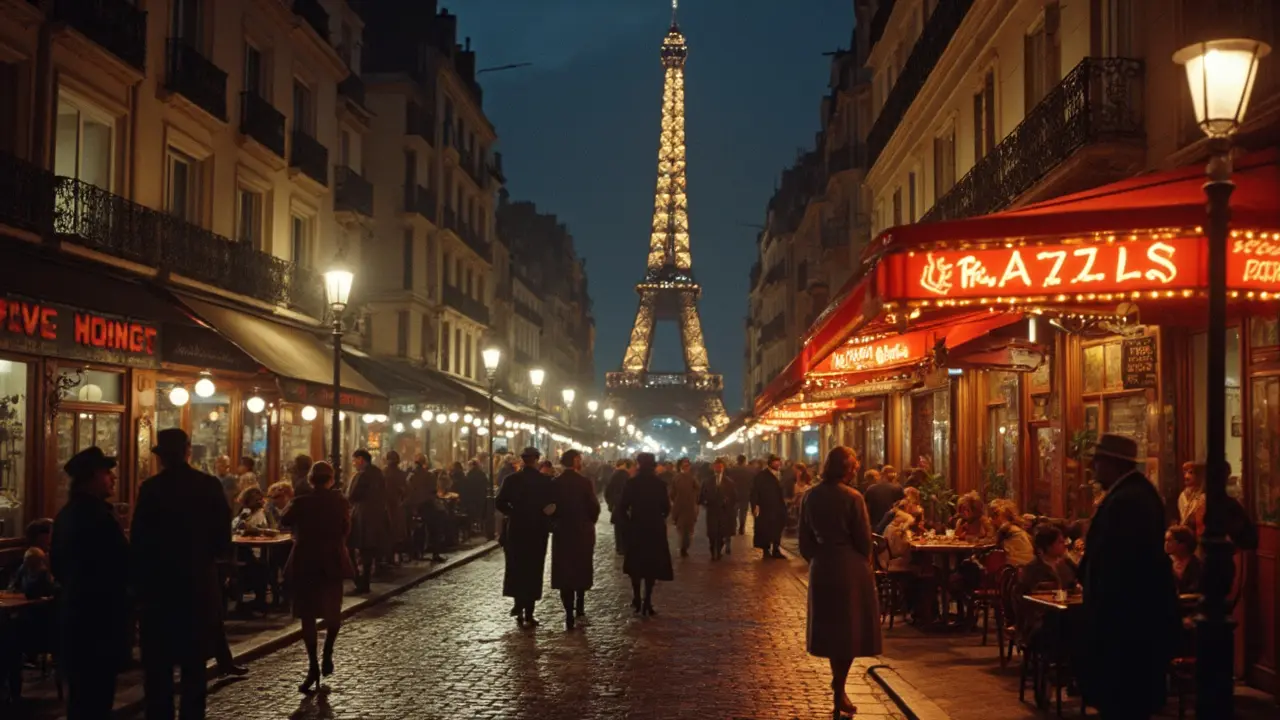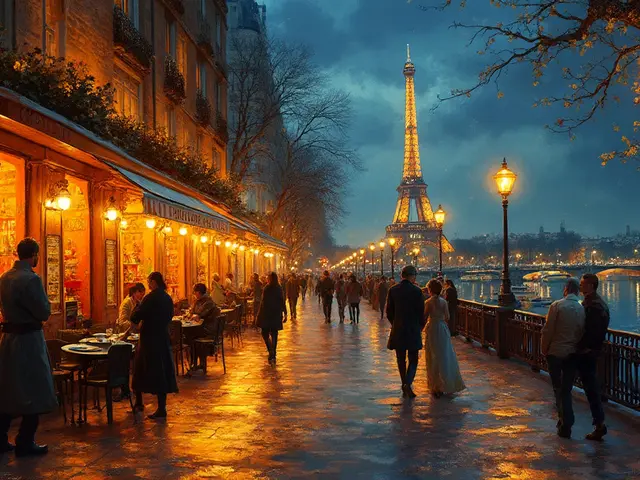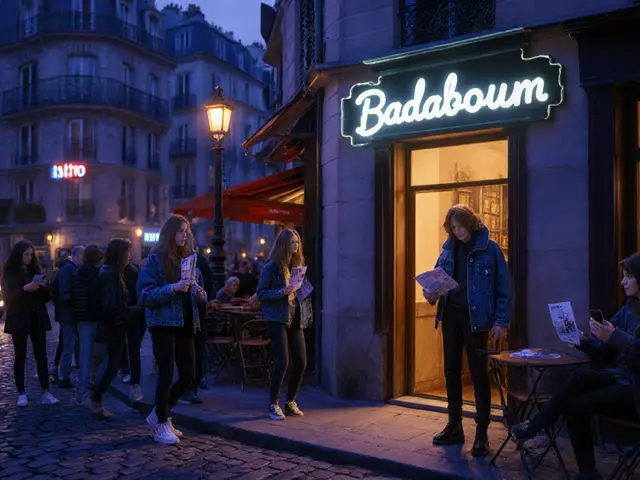Wandering the streets of Paris at night isn’t just about catching a glimpse of the Eiffel Tower in all its lit-up glory. Paris after dark has a real personality—it’s where old legends mix with today's surprises. Ever wondered why Parisians eat dinner so late or how the city earned its 'City of Lights' nickname in the first place? Stick around, and you’ll uncover the secrets.
Getting into Paris nightlife can be as simple as heading to the banks of the Seine with some friends or checking out a jazz club where legends once played. Don’t just rely on touristy bars near the big sights. Try venturing out to spots like the Latin Quarter, Pigalle, or even a canal-side bar in the 10th arrondissement. You’ll feel the buzz the minute you walk in.
- Key Things to Know About Paris by Night
- The History of Paris After Dark
- Experiences and Hotspots for Night Owls
- Tips for Safe and Fun Parisian Nights
Key Things to Know About Paris by Night
Paris isn’t just another city that goes quiet when the sun sets. The whole place transforms after dark, and there’s a surprising mix of things going on, whether you’re out for a chill evening or hunting for wild energy. You’re not stuck with just touristy dinners or packed nightclubs—there’s way more to it.
- Paris nightlife kicks off later than you might expect. Most locals eat dinner around 8 or 9 p.m., so nightlife spots won’t pick up until at least 10. If you show up early, expect empty tables.
- The city’s nickname, “City of Lights,” first came about in the 17th century because Paris was the first to light up its streets with thousands of gas lamps. Today, you’ll spot famous spots like the Notre-Dame, the Louvre, and the Eiffel Tower glowing all the way till 1 a.m.
- The Paris Metro runs until about 1:15 a.m. during the week and 2:15 a.m. on Fridays and Saturdays. Night buses take over after that, but some folks find them confusing, so check your route in advance or grab a taxi if you’re not up for late-night navigation.
- Neighborhoods each have their own flavor. Pigalle’s got the cabarets and old-school bars. Oberkampf and Bastille are full of trendy bars and clubs. For something more relaxed, check out the Marais or the Canal Saint-Martin—locals love these areas for a reason.
- Public drinking is officially banned, but you’ll see plenty of young people hanging along the Seine with a bottle of wine or beer. Just stay respectful and pick up your trash—it’s part of the unspoken rule.
- Walking at night is usually safe in central Paris, but pickpockets don’t take the night off, especially around crowded Metro stations and busy nightlife spots. Keep an eye on your stuff.
Paris by night has its little hacks. Popular attractions—think Eiffel Tower or Montmartre—see fewer crowds after sunset, so late visits can be worth it. Plus, the city’s bridges and viewpoints offer the best photos after dark. Want a good shortcut? Download a Metro app and check last train times so you’re not stranded.
The History of Paris After Dark
Nightlife in Paris isn’t some recent trend dreamed up for tourists. The city’s wild side goes way back. By the late 1600s, Paris had already earned the nickname "The City of Lights" because it was one of the first cities in the world to install street lighting. Back then, those lanterns weren’t just for show—they kept crime in check and let locals keep the party going even after dark.
Fast-forward to the 19th century, and the story gets even juicier. Paris was home to the world’s first cabaret: Le Chat Noir, which opened in 1881 in Montmartre. Not only did Parisians flock there for music, drinks, and risqué comedy, but artists like Toulouse-Lautrec and poets like Verlaine were regulars. The city’s nightlife became a magnet for creative minds and rebels.
There’s no skipping over the crazy era of the 1920s either—think roaring jazz and smoky bars. After World War I, Paris was ground zero for the jazz explosion in Europe. African-American musicians headed to Paris to escape US racism and made the city’s clubs legendary. Josephine Baker, an icon of the time, wowed crowds with her dance shows in places like the Théâtre des Champs-Elysées. Paris didn’t just follow trends; it set them.
Here’s a famous quote from Ernest Hemingway, who soaked up plenty of Paris nightlife himself:
“There is never any ending to Paris and the memory of each person who has lived in it differs from that of any other.”
The numbers back up just how central nightlife has been to Paris. Check out this table for a quick look at some game-changing milestones:
| Year | Milestone | Neighborhood |
|---|---|---|
| 1667 | First public street lighting goes up | Île de la Cité |
| 1881 | Le Chat Noir cabaret opens | Montmartre |
| 1925 | First Paris Jazz Festival | Pigalle |
| 1931 | Josephine Baker becomes a star | Champs-Élysées |
Even now, Paris keeps changing after dark, but it never loses its spark. From the old cabarets to modern nightclubs and pop-up parties on the Seine, the city has always found a way to keep people coming back for more once the sun goes down.

Experiences and Hotspots for Night Owls
If you’re serious about soaking up the real Paris nightlife, you can’t just stick to the tourist trail. Paris at night is a wild mix—from rustic old bars to wild party scenes, from legendary jazz caves to pop-up rooftop parties with killer views. The fun usually starts late; most bars and clubs only get busy around 11 PM and can keep going until the first Metro opens at 5:30 AM.
The Marais is famous for its lively bars and LGBTQ+ friendly spots, with places like Le Duplex or La Perle pulling crowds until late. Over in Oberkampf, you’ll get a cool, laid-back vibe with live music at places like Le Nouveau Casino. Near Pigalle, things get a little grittier—this area was once home to Paris' infamous cabarets, and you can still catch risqué shows at the world-famous Moulin Rouge and Le Chat Noir.
If jazz is your thing, go underground (literally) to clubs like Caveau de la Huchette, where live bands play most nights and tourists mix with locals who actually know how to swing dance. Just across the river, you could find yourself on a floating nightclub on the Seine, like at Concrete, which is famous for all-night techno parties.
Ever heard of the Paris rooftop craze? Spots like Le Perchoir or Skyline Bar hand you stunning nighttime views. These places fill up fast—locals love them as much as visitors do. Foodies, meanwhile, can catch late-night bites at places like Bouillon Pigalle or L’As du Fallafel, which stays open late and serves some of the best Middle Eastern food in the city.
“Paris offers its real face at night—raw, diverse, and surprising. Everything comes alive after dark.” – Le Monde (2023)
If you like quirky experiences, hop on one of Paris’s famous night river cruises, which give a whole new perspective to the city’s glowing bridges and monuments.
- Le Marais: For casual late-night drinks and LGBTQ+ scene.
- Pigalle: For classic cabaret and risqué entertainment.
- Oberkampf: Indie music, packed bars, and a younger crowd.
- Seine river parties: Dance all night on the water.
- Rooftop bars: Le Perchoir and Skyline Bar for the best views.
- Jazz clubs: Caveau de la Huchette for historic vibes.
Here’s a simple look at closing times for some Paris nightlife favorites:
| Venue/Location | Type | Usual Closing Time |
|---|---|---|
| Moulin Rouge | Cabaret | 2:00 AM |
| Caveau de la Huchette | Jazz Club | 5:00 AM |
| Le Perchoir | Rooftop Bar | 2:00 AM |
| Bouillon Pigalle | Brasserie | Midnight |
| Concrete (boat club) | Nightclub | 7:00 AM |
Don’t just wander aimlessly. Jump between a couple of these hotspots, and you’ll get a taste of everything that makes Paris by night so unforgettable.
Tips for Safe and Fun Parisian Nights
If you want to experience Paris nightlife like a true local and not run into trouble, you’ll want to stay smart about a few things. Paris is safe by big-city standards, but you’ll notice a different vibe after dark, especially in busy areas and on public transport.
Start by sticking to well-lit, lively neighborhoods. Central spots like Marais, Latin Quarter, and Saint-Germain are packed, even after midnight, and you’ll spot plenty of other night owls around. Tourist-heavy areas near the Eiffel Tower or Champs-Élysées are safe but attract the usual pickpocket crowds, so keep your phone and wallet close—literally zipped up.
You’ll find night buses and the metro running until about 1:15 a.m. on weekdays and 2:15 a.m. Fridays and Saturdays. After that, you’re looking at night buses (the Noctilien network), taxis, or apps like G7 or Kapten. Uber works too, but it gets pricey late at night. If you’re heading out in a group, split a ride home and save some cash.
- Never leave your drink unattended in bars and clubs.
- ATM machines inside banks are safer at night than those on the street.
- If you’re lost, duck into a hotel lobby for directions (the staff usually speaks English and won’t mind).
- Download offline Google Maps ahead of time. Cell signal can drop in basements or old clubs.
- Dress the part: Parisians dress up, even at night. Leave the white sneakers and big backpacks at home if you want to blend in.
For LGBTQ+ travelers, Le Marais is generally one of the safest and most welcoming nightlife districts, packed with late-night spots, drag brunches, and zero attitude. The Pigalle neighborhood, famous for its cabarets like Moulin Rouge, is safe but gets crowded and has the occasional tout—just ignore anyone trying to pull you into venues.
| Metro Last Train | Uber Night Rate | Common Emergencies | Police Call Number |
|---|---|---|---|
| 1:15am (Weekdays), 2:15am (Weekend) | ~30% higher after midnight | Lost items, minor theft, getting lost | 17 |
If you’re solo, join a small-group night tour (food, bike, or history walks run until late and cut the risk of wandering into a sketchy area). Paris loves its nightlife, but it loves the rules too—so expect door policies at clubs and remember, if you’re under 18, bars won’t serve you past 10pm.
Stick to these tips, and Paris nights will feel as charming as you’d hope—just with fewer hiccups and better stories the next morning.




